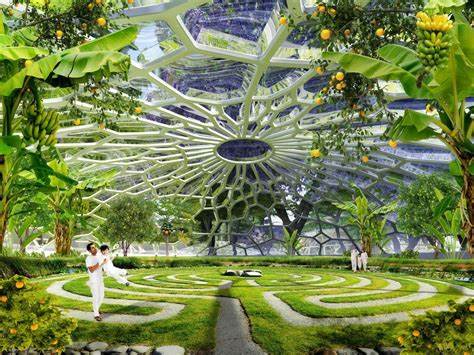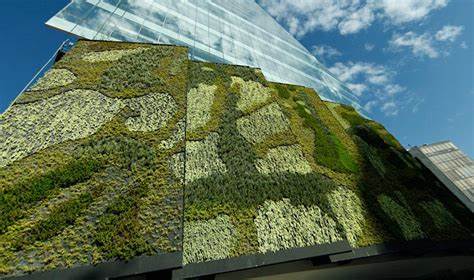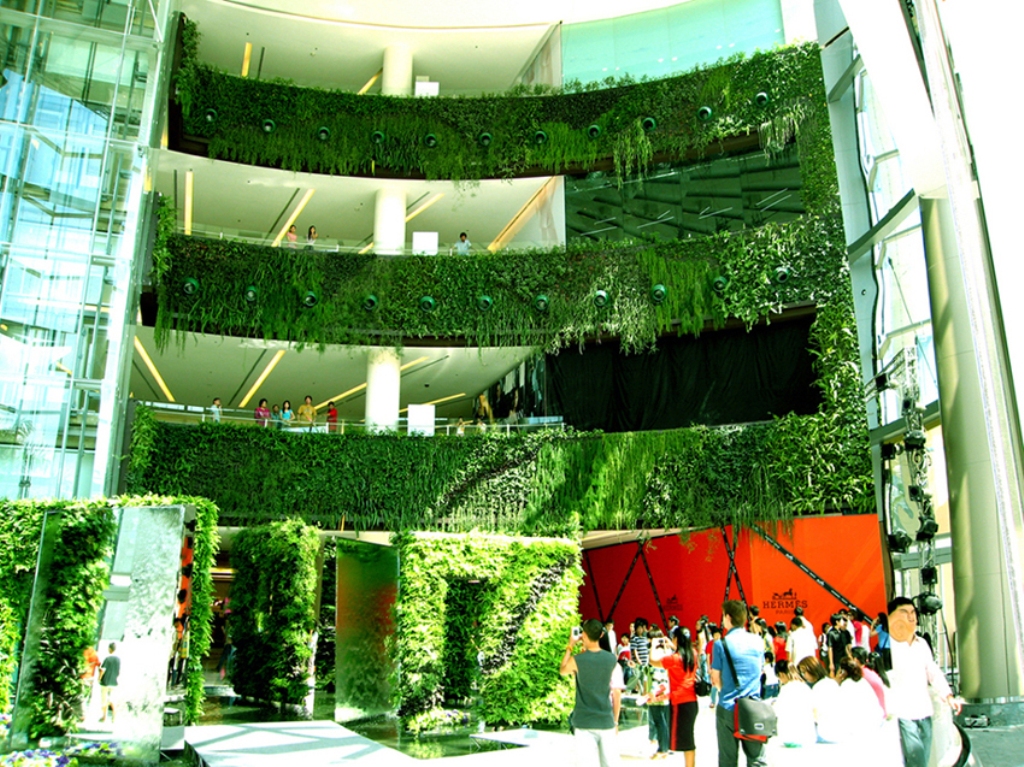
The Future of Vertical Gardens: Advancements, Environmental Benefits, and Potential
Introduction
The Future of Vertical Gardens has gained significant attention as cities become more crowded and green spaces become scarce. This article aims to provide a comprehensive overview of this innovative concept, exploring its historical background, key concepts, main discussion points, case studies, current trends, challenges, and future outlook.
Historical Background
Vertical gardens, also known as living walls or green walls, have evolved over time. The concept can be traced back to the Hanging Gardens of Babylon in ancient Mesopotamia, one of the Seven Wonders of the Ancient World. However, it was not until the 20th century that vertical gardens gained prominence, thanks to the efforts of pioneers such as Patrick Blanc and Stanley Hart White.
Key Concepts and Definitions
Vertical gardens consist of living plants and vegetation that are vertically attached to a structure or wall. They typically utilize a system of irrigation, support structures, and growing mediums to sustain plant growth. Key terms and concepts related to vertical gardens include hydroponics, aeroponics, and the use of modular systems for easy installation and maintenance.

Main Discussion Points
Advancements in technology for vertical gardens have revolutionized the way they are designed and implemented. Automated irrigation systems ensure that plants receive the right amount of water, reducing wastage and improving efficiency. Additionally, the integration of smart sensors and data analytics allows for real-time monitoring and optimization of environmental conditions, ensuring the health and vitality of the plants.
Vertical gardens offer significant environmental benefits. They help reduce the urban heat island effect by absorbing and deflecting solar radiation, thereby lowering ambient temperatures in cities. Furthermore, these green walls act as natural air purifiers, filtering pollutants and improving air quality. Additionally, vertical gardens provide opportunities for carbon sequestration, helping mitigate climate change.
Case Studies or Examples
The Bosco Verticale in Milan, Italy, serves as an exemplary case study of vertical gardens. This innovative residential complex features two high-rise towers covered in more than 700 trees and 20,000 plants. The project has had a profound impact on the local environment and community, creating a microclimate, reducing energy consumption, and providing a natural habitat for birds and insects.
The One Central Park in Sydney, Australia, showcases the impressive design and implementation of vertical gardens. This mixed-use development features a stunning 21-story green wall, which is not only aesthetically pleasing but also provides numerous benefits. The vertical gardens contribute to the building’s energy efficiency, provide shade, and enhance the overall livability of the space.
Current Trends or Developments
The integration of vertical gardens in urban planning has become a growing trend. City planners and architects are recognizing the importance of incorporating green spaces into the urban fabric. Vertical gardens offer a unique opportunity to bring nature back into the concrete jungle, improving the quality of life for residents and visitors alike.
The use of modular systems for easy installation and maintenance is gaining popularity. These systems allow for quick and efficient installation of vertical gardens, with minimal disruption to existing structures. Additionally, modular systems make it easier to replace or relocate plants, ensuring the longevity and adaptability of vertical gardens.

Research on the effects of vertical gardens on mental health is an emerging field. Studies have shown that exposure to nature and green spaces has a positive impact on mental well-being. Vertical gardens, by bringing nature closer to people, have the potential to improve mental health, reduce stress, and enhance overall happiness.
Challenges or Controversies
One of the main challenges in implementing vertical gardens is the limited availability of suitable locations. Not all buildings or structures are structurally capable of supporting the weight and maintenance requirements of vertical gardens. Finding suitable locations and ensuring the long-term viability of these green walls remain a challenge.
Maintenance requirements and costs associated with vertical gardens can be substantial. Regular watering, pruning, and fertilization are necessary to ensure the health and vitality of the plants. Additionally, specialized equipment and skilled personnel are often required, adding to the overall costs of vertical gardens.
Disagreements exist regarding the effectiveness of vertical gardens in combating pollution. While they do contribute to air purification and carbon sequestration, some argue that the overall impact may be limited compared to other strategies. Further research and data are needed to fully understand the effectiveness of vertical gardens in addressing pollution.
Future Outlook
Vertical gardens have immense potential in sustainable architecture. As the world grapples with climate change and environmental degradation, incorporating vertical gardens into building designs can help mitigate these issues. The integration of green walls can enhance energy efficiency, reduce carbon emissions, and create healthier indoor and outdoor environments.
The adoption of vertical gardens in food production is an exciting prospect. With the increasing demand for locally sourced and sustainable food, vertical gardens offer a solution for urban agriculture. By utilizing vertical spaces, food can be grown closer to consumers, reducing transportation costs, and ensuring fresh, nutritious produce.

Residential buildings are also starting to embrace vertical gardens. From individual homes to apartment complexes, vertical gardens offer residents an opportunity to connect with nature and enjoy the benefits of green spaces. Increasingly, developers are incorporating vertical gardens into their designs, creating sustainable and vibrant living environments.
Conclusion
In conclusion, the future of vertical gardens is promising. Advancements in technology, their environmental benefits, and their potential applications in various sectors make them a compelling concept. As cities continue to grow and face environmental challenges, vertical gardens offer a unique and sustainable solution that can improve the quality of life for urban dwellers.
References
For further reading on vertical gardens, refer to the following resources:
Patrick Blanc’s “The Vertical Garden: From Nature to the City”
Stanley Hart White’s “The Vertical Garden: History and Theory”
Research papers by Dr. Linda A. Velazquez on sustainable architecture and urban greening




